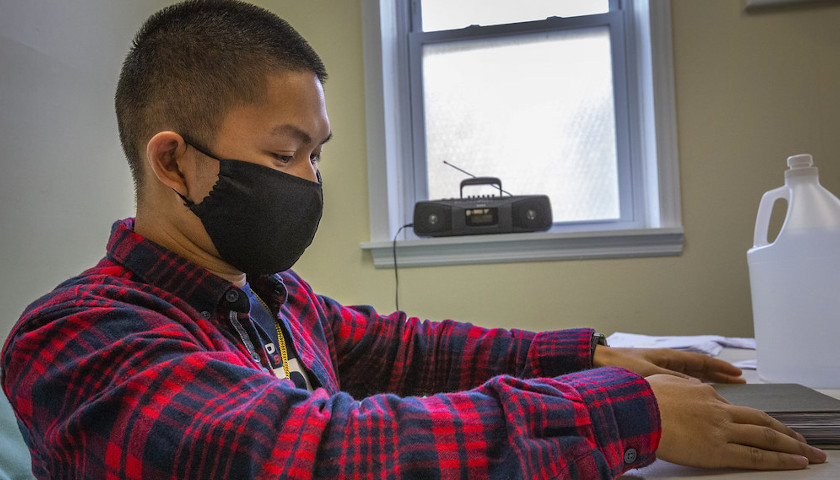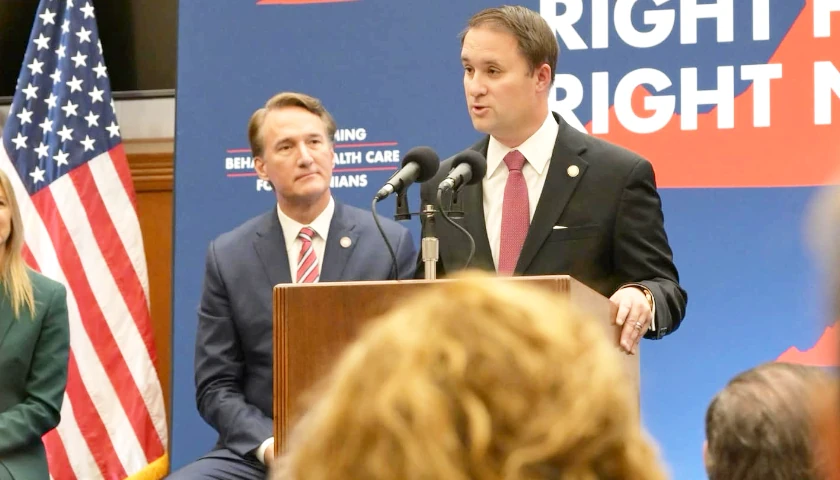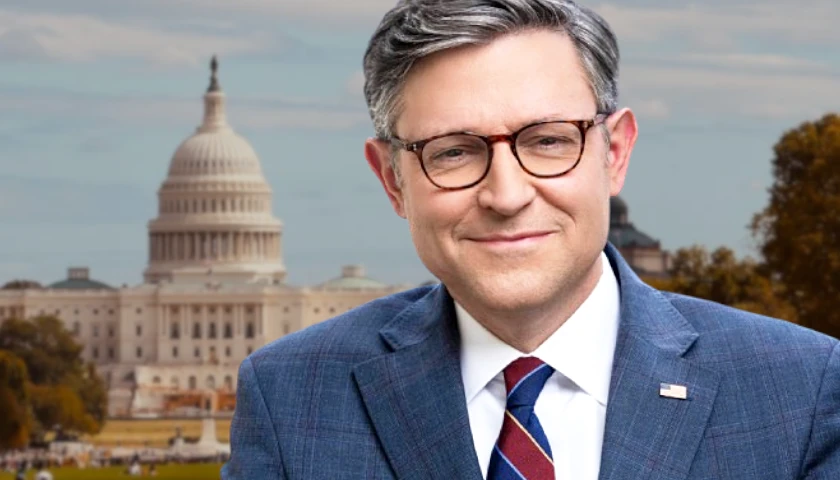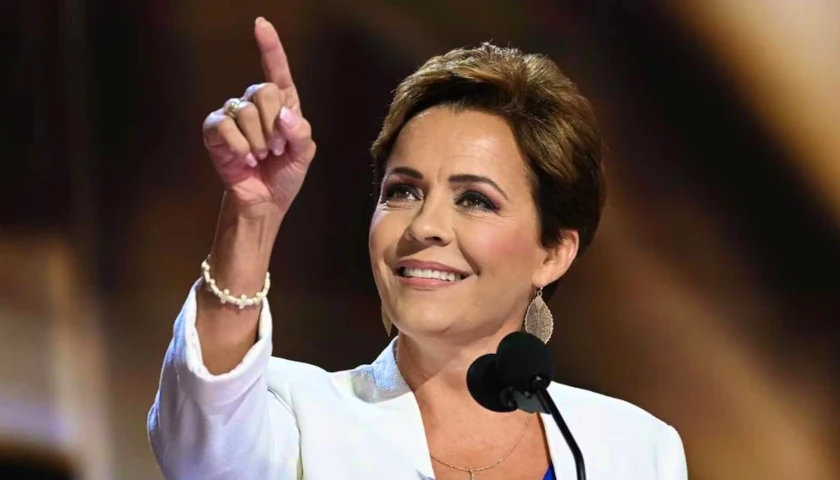by Fred Lucas
Proponents of overhauling elections to allow voters to have a backup plan if their candidate doesn’t win went 1-1 at the state level in the 2020 election, but are looking to change how elections work in other states.
More than 30 bills on ranked-choice voting have been proposed in state legislatures across the country, according to Fair Vote, the nonprofit group that is promoting the system nationally.
Ranked-choice voting is a system that allows voters to rank a first, second, and third choice, or more. A voter casting a ranked-choice ballot, for example, might select three candidates in order of preference out of six candidates for a congressional seat.
Proponents say ranked-choice voting is a moderating force and superior because it means voters don’t have to settle for the lesser of two evils. Opponents say the system is problematic because it is confusing to voters and can lead to outcomes where the candidate winning the most votes loses the election.
Want to keep up with the 24/7 news cycle? Want to know the most important stories of the day for conservatives? Need news you can trust? Subscribe to The Daily Signal’s email newsletter. Learn more >>
The effort to promote ranked-choice voting largely has been financed by a liberal donor who is the daughter-in-law of media mogul Rupert Murdoch.
Before primary elections by popular vote in the 1900s, political parties generally used a similar winnowing process to choose potential nominees until one candidate achieved majority support, said Rob Richie, CEO of Fair Vote, a leading organization that advocates ranked-choice voting.
In the Progressive Era, beginning in 1890, states began adopting regulations for primaries to nominate candidates, instead of having party bosses do so at conventions or caucuses. By 1917, all but four states had adopted some form of primaries. The first primary at the presidential level was in 1912.
“Candidates will talk to more voters if they know there is a second or third choice on the ballot,” Richie told The Daily Signal. “They will walk past their opponents’ yard sign and still knock on the door and get to know the voter.”
Protect My Ballot, a coalition of state think tanks opposed to ranked-choice voting, includes the Maine Policy Institute, the Alaska Policy Forum, the Fiscal Alliance Foundation, the Oklahoma Council of Public Affairs, and the Freedom Foundation of Minnesota.
“Americans of all political backgrounds have rejected ranked-choice voting as a confusing scheme that makes it more difficult to exercise your right to a vote that counts,” Rebekah Paxton, director of research and coalitions at the Employment Policies Institute, which launched Protect My Ballot, told The Daily Signal.
“Studies show that [ranked-choice voting] disenfranchises voters and reduces turnout, while its proponents’ promises remain largely unfulfilled in practice,” Paxton said.
Here are answers to key questions about ranked-choice voting and where it stands.
1. Who’s Bankrolling These Efforts?
Much of the funding for projects to persuade states and localities to adopt ranked-choice voting has come from outside the states.
Kathryn Murdoch spent $500,000 through the group Unite America to convince Alaska voters to say yes to the initiative on the November ballot. She is a daughter-in-law of Rupert Murdoch, owner of News Corp., Fox News, The Wall Street Journal, the New York Post, and many other U.S. and international media properties.
Unite America, a Colorado-based nonprofit bankrolling promotion of ranked-choice voting, contributed $600,000 to the Alaska effort, according to Alaska Public Media.
“A strong democracy is the foundation for progress on every issue that we care about,” Murdoch said in a public statement in March 2020 about her funding of Unite America. “Therefore we must take urgent action to address our increasingly polarized and gridlocked system that is at present incapable of putting the needs and aspirations of citizens and their communities first.”
In the New York City initiative in 2019 to adopt ranked-choice voting for primary and special elections, Murdoch contributed $500,000. A liberal group called the Action Now Initiative, established by donors John and Laura Arnold, gave $1 million to that effort.
Murdoch is co-founder of the liberal Quadrivium Foundation. She is the largest donor to Unite America, at $3.8 million, according to the Washington-based Capital Research Center, which monitors nonprofits.
Murdoch worked for the Clinton Foundation from 2007 to 2011 doing strategy and communications for its Clinton Climate Initiative. She told Politico in 2020 that she was “really excited to back whoever the [Democratic presidential] nominee is, no matter what.”
Other donors to Unite America include video game developer Riot Games co-founder Marc Merrill and Panera Bread founder Ron Shaich.
Unite America contributed to Alaskans for Better Elections, as well as other groups such as Fix Congress Now!, Represent.us, Pennsylvanians Against Gerrymandering, Secure Democracy, Ranked Choice Voting 2020, and With Honor Action.
Unite America did not respond to The Daily Signal’s inquiries and request for comment for this report.
Donors to Fair Vote, the other major advocate of ranked-choice voting, aren’t secret, Richie noted.
“Fair Vote has a budget of less than $1 million. Donations are openly disclosed,” he said, speaking only for his group.
2. What States and Other Jurisdictions Might Adopt It?
A bipartisan bill in Georgia—a decisive state in the 2020 presidential election—would allow ranked-choice voting for military and overseas ballots, since Georgia already is a runoff state.
A runoff election occurs when no candidate gets a majority of the vote, usually because more than two candidates are in the race. So the top two vote-getters clash in another election.
Another bill in the Georgia Legislature, proposed by Republican lawmakers, would decide presidential general elections by ranked-choice voting.
“In Georgia, the presidential race could have turned out differently with ranked-choice voting, since no candidate won a majority,” Richie said of the 2020 contest between Donald Trump and Joe Biden. “Georgia Republicans are looking at the last election and putting a bill in.”
According to official results, Biden won 49.5% of the vote in Georgia, less than a majority. Trump won 49.2%. The mostly right-leaning Libertarian Party candidate, Jo Jorgensen, won 1.2%. So, presuming most Libertarian voters would make a Republican their second choice, ranked-choice voting might have made Trump the winner.
In Oregon, state lawmakers introduced bills to expand ranked-choice voting statewide, after it made a debut in Benton County in November’s election for local offices.
The group Better Ballot Alabama is pushing the system for statewide elections in Alabama.
3. How Does It Work?
Ranked-choice voting differs somewhat from jurisdiction to jurisdiction, but typically works like this, whether in a crowded primary election field or a multiparty general election:
- All candidates for a given office appear on the ballot. Voters—instead of choosing only one candidate—rank each candidate from “1” to “2” to “3” and so on.
- If one candidate wins 50% or more of the first-preference votes, the election is over.
- If no one wins the first tally, the candidate with the fewest first-preference votes is eliminated and officials make another tally of votes for the remaining candidates.
- Voters who selected the eliminated candidate as their first choice have their vote counted for their second preference in this next round.
- Counting continues, perhaps with one or more other candidates eliminated, until one candidate eventually emerges with a majority of votes.
In such systems, a voter doesn’t have to rank his choices and may opt to pick just one. However, if a voter doesn’t select and rank multiple candidates, his ballot is more likely to be discarded after the first round of counting.
“Ballot exhaustion” is a term used by election watchers to describe a ballot that is discarded if a voter ranks only candidates who are eliminated from contention.
“It’s a good program for political and ideological activists. The average voters have a hard time remembering the names of the down-ballot candidates,” Paul Craney, spokesman for the Massachusetts Fiscal Alliance, which led the fight against ranked-choice voting in the Bay State, told The Daily Signal. “Simplicity and clarity to voting is better than ranking and algorithms.”
Election watchers sometimes refer to ranked-choice voting as an instant runoff. Some states that hold runoff elections—such as Alabama—allow overseas voters to rank their choices on absentee ballots to streamline the process.
Alabama, Arkansas, Louisiana, Mississippi, and South Carolina all have runoffs and allow for overseas ranked-choice voting in case an election goes to a runoff, according to Fair Vote.
“Compared to runoffs, where you always have a declining turnout, this is a better alternative,” Richie said of ranked-choice voting. “The average decline [in turnout] from an election to the runoff is 37%. Also, it’s less costly to the taxpayers than holding two elections.”
But runoff elections are a better alternative to having candidates win by a plurality, according to a 2019 report by Heritage Foundation senior legal fellow Hans von Spakovsky and Public Interest Legal Foundation President J. Christian Adams.
A majority is more than 50% of the vote, while a plurality is the largest percentage of votes that go to any one candidate in a race. A candidate is less likely to achieve a majority when a race features more than two viable candidates.
For example, the U.S. Senate elections in Georgia each had multiple candidates, and no candidate got 50%. In most states, the plurality vote-getter would win a race. But in Georgia, this required the top two candidates to face off in a special election.
In their study, Adams and von Spakovsky write:
It is true that some voters might not turn out for a runoff election that is held several weeks after the general election because their preferred candidate did not gather enough votes to be in the runoff. However, the added time window gives potential voters the opportunity to reexamine and reeducate themselves about the character and views on issues of the two candidates who received the largest pluralities in the general election.
Voters have a greater opportunity to make an informed choice than with instant runoffs (i.e., ranked-choice voting). Runoff elections guarantee that the winner of the runoff election has a genuine mandate from a majority of the voters—a crucial factor in a democratic system. Runoff elections carry additional costs—but so do primary and general elections. Yet few people suggest abolishing them because of their cost. Consent of the governed matters.
4. How Often Does It Change Outcome?
The ranked-choice voting system became particularly controversial after Maine’s 2018 election, when Rep. Bruce Poliquin, a Republican, ultimately lost his race for reelection to Democrat Jared Golden despite winning a plurality of the vote.
A review of four elections in Washington state and California using ranked-choice voting found “the winner in all four elections receive[d] less than a majority of the total votes cast,” according to a 2014 study by professors from the University of North Carolina and Ohio State University.
“Thus, it is possible that the winning candidate will fall short of an actual majority when a substantial number of ballots are eliminated, or ‘exhausted,’ during the vote redistribution process,” the report said, adding that “there is some probability that a voter’s ballot will become exhausted, eliminating their influence over the final outcome.”
Maine’s 2018 congressional race isn’t the only instance of the ranked-choice system turning a top vote-getter into a loser, as 17% of candidates who won a plurality ended up losing the election, according to a 2019 study by the Maine Policy Institute that looked at 96 ranked-choice elections nationally.
This study included two city council races in Minneapolis in 2017; a 2016 city council race in Berkeley, California; and a 2016 school director race in Oakland, California. The review of elections in which a plurality vote winner lost the election goes back to 2008, and includes a mayor’s race in Burlington, Vermont.
Prior to 2008, you have to go back to the 1975 mayor’s contest in Ann Arbor, Michigan, in which the candidate winning the most first-choice votes ended up losing the election.
In the 2010 Oakland mayor’s race, the candidate with the most first-place votes lost the election to a candidate who had 25,000 second- and third-choice votes after nine rounds of counting.
“The frequency with which ranked-choice voting elections produce a different outcome than plurality elections is important because it allows lawmakers to weigh the benefits and consequences of a new voting system,” the study by the Maine Policy Institute says. “If ranked-choice elections rarely produce a different outcome, the costs of such a system may outweigh the alleged benefits.”
Although advocates of ranked-choice voting claim it means a spoiler candidate is less likely to throw an election, the Massachusetts Fiscal Alliance’s Craney says such a system provides leverage to fringe candidates.
“In Maine, there was less negative campaigning from the candidates but more negative campaigning from super PACs,” he said. “I would argue that it’s better coming from the candidates. We want to know how the candidates differ.”
Craney said spoiler candidates in the 2018 race for Maine’s 2nd Congressional District campaigned to manipulate the outcome by encouraging their voters not to make Poliquin their second choice. Craney said he would expect this to happen more often.
“Do you want a ‘Marijuana Party’ or ‘Gun Rights Party’ candidate or other single issue parties leveraging votes?” Craney asked. “I would argue it’s better to have major parties that try to build a majority consensus.”
Tossing out so many first-place votes essentially disenfranchises voters, Adams and von Spakovsky write in their study.
They also note that some jurisdictions allow voters to pick and rank only three candidates on the ballot, even if there are more. So, if a voter’s top three candidates are eliminated, his or her ballot will be discarded, they write:
Not only is ranked-choice voting too complicated, it disenfranchises voters, because ballots that do not include the two ultimate finalists are cast aside to manufacture a faux majority for the winner. But it is only a majority of the voters remaining in the final round, not a majority of all of the voters who actually cast votes in the elections.
5. What States Use This Method?
Interestingly, Democratic presidential nominating contests in Alaska, Nevada, Hawaii, Kansas, and Wyoming used the ranked-choice voting method in 2020.
These five states did not use it for the general election, however, as primaries and caucuses mostly are run by political parties, while the state is in charge of general elections.
In 2020, Alaska became the second state to adopt the system; Maine was the first state to adopt it, for the 2016 election.
Massachusetts voters didn’t follow their fellow New Englanders, however, as the Bay State resoundingly defeated the measure in November by 10 points. This came after proponents overwhelmingly outspent opponents by millions, noted Craney of the Massachusetts Fiscal Alliance.
In Alaska, voters narrowly approved ranked-choice voting with 51% of the vote; in Massachusetts, 55% of voters rejected the proposal.
Richie, of First Vote, said many factors contributed to the different outcomes.
“Alaska is smaller and has a long history of multicandidate, high-profile elections,” Richie said, later adding: “Massachusetts hadn’t had a history of multicandidate races. It’s also a big state. … The first city in Massachusetts doing [ranked-choice voting] was Cambridge. There is a certain eye-rolling to a lot of Massachusetts voters about Cambridge. If the model had been Springfield or Worcester, it might have been different.”
North Carolina adopted ranked-choice voting for judicial vacancies in 2006. But after just two elections in 2010—a statewide Court of Appeals race and a districtwide Superior Court race—resulted in several rounds of counting, legislators repealed the system in 2013.
New York City, larger than many states, adopted ranked-choice voting in 2019 for all future primary and special elections.
Also, the Virginia Republican Party announced that delegates to a state convention May 8 will use ranked-choice ballots to nominate a candidate for governor.
The New York mayor’s race and Virginia’s gubernatorial race are two of the biggest off-year elections in 2021.
6. What Local Jurisdictions Adopted It?
Voters in six municipalities opted in 2020 either to adopt or expand ranked-choice voting: Albany and Eureka, California; Bloomington and Minnetonka, Minnesota; Boulder, Colorado; and Portland, Maine.
Beyond that, 20 other municipal and county jurisdictions—including major cities such as Minneapolis, St. Paul, Oakland, and San Francisco—have adopted ranked-choice voting. The state legislatures of Virginia and Utah adopted the system as a local option.
However, four jurisdictions—Burlington, Vermont; Ann Arbor, Michigan; Aspen, Colorado; and Pierce County, Washington—repealed laws allowing ranked-choice voting. Burlington, Aspen, and Pierce County acted after a plurality winner lost an election.
7. Does Ranking Candidates Complicate Voting?
Fair Vote cites a Bangor Daily News survey after the 2018 election in which 75% of respondents said they understood the ranked-choice voting system.
Still, others disagree.
California Gov. Gavin Newsom, a Democrat from San Francisco, which has the system, vetoed legislation to take it statewide.
“Where it has been implemented, I am concerned that it has often led to voter confusion, and that the promise that ranked-choice voting leads to greater democracy is not necessarily fulfilled,” Newsom said in a veto message in 2019.
Ranked-choice voting complicates voting, prompting voters to choose several candidates or risk having their ballots discarded, when most voters don’t know the detailed policy positions of all candidates, the Maine Policy Institute study says.
The study cites Pew Research Center data showing that in 2016, only 48% of Hillary Clinton voters and 41% of Donald Trump voters knew “a lot” about their candidates’ policy positions.
Meanwhile, a 2018 survey found that 34% of registered Republican voters and 32.5% of registered Democratic voters did not know the names of their party’s congressional candidates in their districts during a crucial midterm election.
“When individuals leave columns blank on their ballots and the candidate(s) they vote for are eliminated from contention, their ballot is not counted in the final tabulation,” the Maine Policy Institute report says, adding:
Therefore, if these voters only choose one candidate on their ballot, it is more likely to become exhausted, thereby giving those who fully complete their ballot more influence over the electoral process. In other words, African Americans, Latinos, voters with less education, and those whose first language is not English are more likely to be disenfranchised with a ranked-choice voting system.
8. How Does It Affect Minority Voters, Candidates?
The ranked-choice voting process has drawn fire from both the left and the right.
New York City adopted it for municipal primary elections, but over the objections in 2019 of prominent minority leaders such as Hazel Dukes, president of the NAACP’s New York State Conference, who said the system “is not for us.”
The Manhattan Times reported that New York City Council member Daneek Miller, co-chairman of the council’s Black, Latino & Asian Caucus, argued: “Under ranked-choice voting, the city of San Francisco has seen a depressed voter turnout in communities of color.”
The caucus co-chairwoman, council member Adrienne Adams, told the borough newspaper: “Now that our black and brown communities have found electoral success, the powerful special interests want to change the rules on us.”
The system could be prone to political players who would game it to harm minority candidates, according to a report by professors from Drexel University and the University of Western Australia focusing on Utah’s ranked-choice voting system.
An analysis of San Francisco elections between 1995 and 2001 by Jason McDaniel, an associate professor at San Francisco State University, found that ranked-choice voting likely decreases turnout, primarily among both black and white voters.
Conversely, a 2016 study of California results, sponsored by the advocacy group Representation2020, found that “ranked-choice voting (RCV) increases the likelihood that a woman will win local elective office and, importantly, increases the proportion of female candidates of color running and winning local elective office.”
9. What Other Countries Use It?
Proponents noted that ranked-choice voting is used by every voter in Australia, Ireland, New Zealand, Malta, Northern Ireland, and Scotland.
The system also is used in some form in India, Nepal, Pakistan, and Sri Lanka, according to Fair Vote.
However, in the 2010 elections in Australia, the Labor Party won the Australian House despite getting just 38% of the first-choice votes on the initial ballot.
The Liberal-National coalition, which came in second place, got 43% of the first-choice votes, or the most votes. But Labor won control of the House despite winning fewer first-choice votes.
– – –
Fred Lucas is chief national affairs correspondent for The Daily Signal and co-host of “The Right Side of History” podcast. Lucas is also the author of “Abuse of Power: Inside The Three-Year Campaign to Impeach Donald Trump.” Send an email to Fred.








